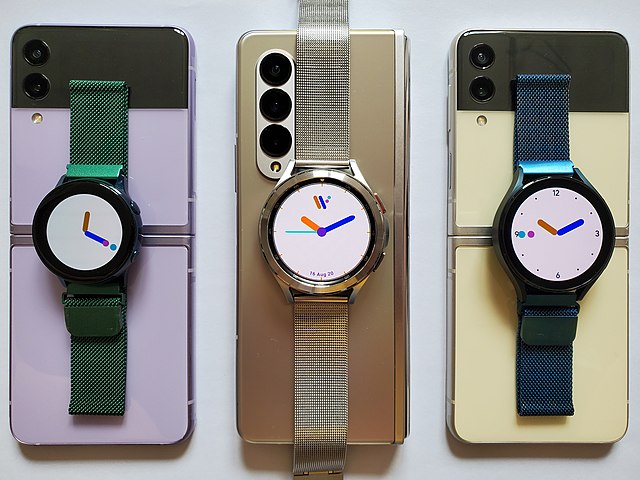A smartwatch is a portable and wearable computer device in a form of a watch; modern smartwatches provide a local touchscreen interface for daily use, while an associated smartphone app provides management and telemetry, such as long-term biomonitoring. While early models could perform basic tasks such as calculations, digital time telling, translations, and game-playing, smartwatches released since 2015 have more general functionality closer to smartphones, including mobile apps, a mobile operating system, and WiFi/Bluetooth connectivity. Some smartwatches function as portable media players, with FM radio and playback of digital audio and video files via a Bluetooth headset. Some models, called watch phones, have mobile cellular functionality such as making telephone calls.
An Apple Watch browsing French Wikipedia
Seiko Data-2000 with docking station, 1984
Timex Datalink Model 150 as worn by commander William Shepherd during Expedition 1 and cosmonaut Mikhail Tyurin, Expedition 14, on the International Space Station in 2006
The first Linux Smartwatch was presented at IEEE ISSCC2000 on 7 February 2000, where presenter Steve Mann was named "the father of wearable computing". This watch also appeared on the cover and was the feature article of Linux Journal Issue 75.
A wearable computer, also known as a body-borne computer, is a computing device worn on the body. The definition of 'wearable computer' may be narrow or broad, extending to smartphones or even ordinary wristwatches.
Smartwatches are an example of a wearable computer.
Smartphones and smartwatches
Evolution of Steve Mann's WearComp wearable computer from backpack based systems of the 1980s to his current covert systems
Timex Datalink USB Dress edition with Invasion video game. The watch crown (icontrol) can be used to move the defender left to right and the fire control is the Start/Split button on the lower side of the face of the watch at 6 o' clock.








